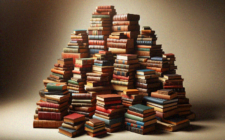Have you ever thought about new sources for raising funds and bootstrapping projects? Are you also among the blockchain technology devotees eager to learn more about ways to help them solve the dependency of financial platforms and models?
In this article, we’ll introduce you to the Initial DEX offering and Initial Coin Offering. We’ll compare these two to help you understand what they are all about and why companies use them.
During the previous months, we have noticed an increase in interest in the decentralized listing of tokens. The crucial reason for that is the lack of many restrictions on buying tickets on DEX and higher cost-efficiency.
So, let’s get to know what IDO and ICO terms stand for, shall we?
The definition of IDO and ICO
Initial DEX Offering, or IDO, represents a kind of crowdfunding in which one particular issuer is responsible for issuing IDO coins with the help of a liquidity, decentralized platform. For those who aren’t familiar with it, a decentralized liquidity exchange represents a cryptocurrency asset exchange that utilizes liquidity pools for making possible tokens trading for traders.
On the other hand, Initial Coin Offering is a prevalent fundraising method that IT and crypto startups use to offer services or products related to the blockchain or cryptocurrency space. It’s the crypto equivalent to Initial Public Offerings.
IDO vs ICO – explanation
When it comes to IDO Vs ICO, we’d like to point out that Initial Dex Offering has numerous vital benefits over Initial Coin Offering beyond the decentralization ethos. DEX provides frictionless liquidity, immediate trading, and, what’s most interesting, lower listing costs without any need to restrict users. IDOs are open and are way more transparent.
Compared to the past pre-mined Initial Coin models, which have rewarded founders over fair community distribution, IDOs are an excellent way to launch a new crypto project. If we also compare IDOs to ICOs, we’ll realize that IDOs have a shallow market cap, following the public listing.
There are two reasons for that. The first one is a minimal amount of money that has been raised from the actual IDO, where participants took a small allocation. In contrast, the second reason refers to the vesting period for private investors.
The thing IDO and ICO have in common?
If you were wondering what Initial Dex Offering and Initial Coin Offering have in common, we are here to get you all the relevant information. According to our experts, IDOs and ICOs share the reliability of the knowledgeable community of activists to vet the offerings.
Therefore, it may either be a weak point that leaves prospective buyers to lack information, or it will build a community and provide real decentralization.
What are the top advantages of IDOs and ICOs?
In conclusion, it’s always best for you to know the top advantages of Initial DEX Offerings and Initial Coin Offerings. These advantages are:
- Token listings on the DEX are being realized right after the sale.
- They are much more stable since investors don’t immediately receive all tokens. It decreases the sell-off size.
- Many marketing efforts are shared by the project or platform being created from the project itself.




